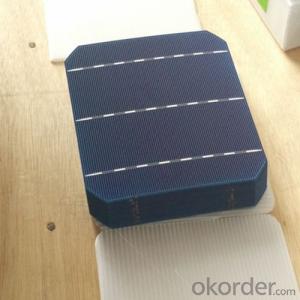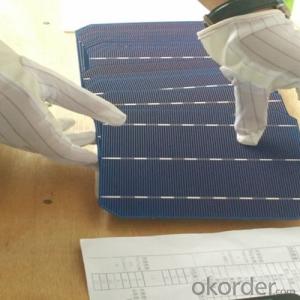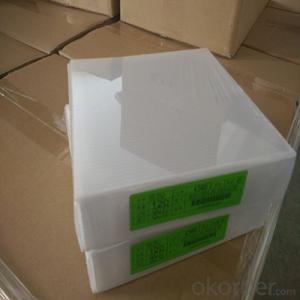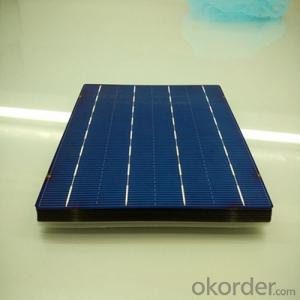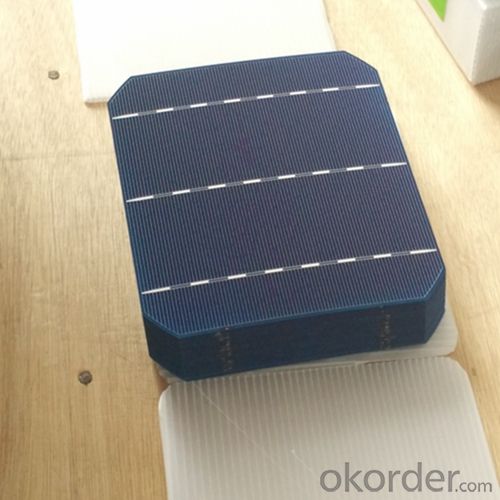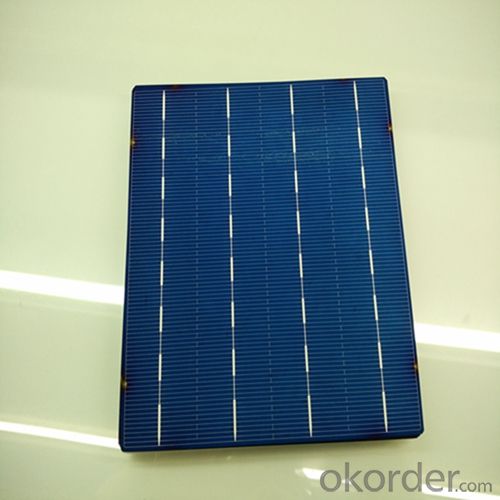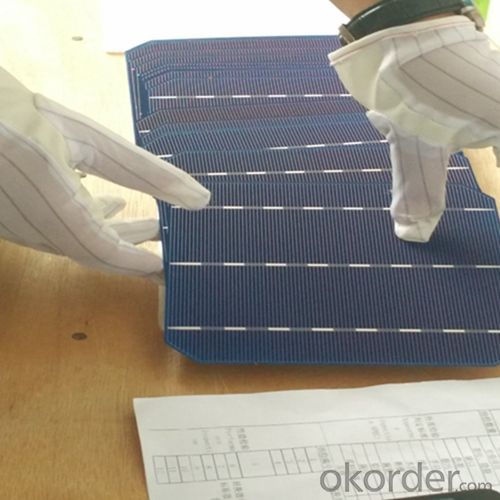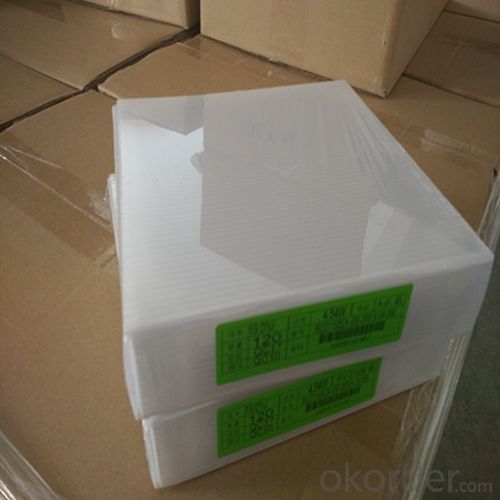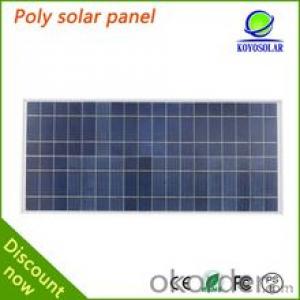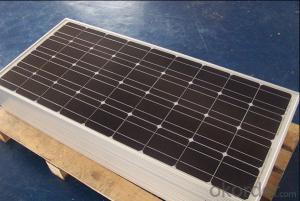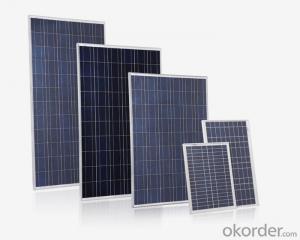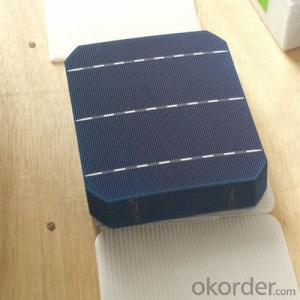Poly 156x156mm2 Solar Cells on Roof - Class A4 Made
- Loading Port:
- Shanghai
- Payment Terms:
- TT OR LC
- Min Order Qty:
- 6000 watt
- Supply Capability:
- 6000000 watt/month
OKorder Service Pledge
OKorder Financial Service
You Might Also Like
The operation of a photovoltaic (PV) cell requires 3 basic attributes:
The absorption of light, generating either electron-hole pairs or excitons.
The separation of charge carriers of opposite types.
The separate extraction of those carriers to an external circuit.
In contrast, a solar thermal collector supplies heat by absorbing sunlight, for the purpose of either direct heating or indirect electrical power generation from heat. A "photoelectrolytic cell" (photoelectrochemical cell), on the other hand, refers either to a type of photovoltaic cell (like that developed by Edmond Becquerel and modern dye-sensitized solar cells), or to a device that splits water directly into hydrogen and oxygen using only solar illumination.Characteristic of Mono 156X156MM2 Solar Cells
You are gaining energy independence - add battery backup power for even greater energy security
The cost of electricity is only going to rise – insure against that rising cost
Adaptive cells change their absorption/reflection characteristics depending to respond to environmental conditions. An adaptive material responds to the intensity and angle of incident light. At the part of the cell where the light is most intense, the cell surface changes from reflective to adaptive, allowing the light to penetrate the cell. The other parts of the cell remain reflective increasing the retention of the absorbed light within the cell.[67]
In 2014 a system that combined an adaptive surface with a glass substrate that redirect the absorbed to a light absorber on the edges of the sheet. The system also included an array of fixed lenses/mirrors to concentrate light onto the adaptive surface. As the day continues, the concentrated light moves along the surface of the cell. That surface switches from reflective to adaptive when the light is most concentrated and back to reflective after the light moves along
Mechanical data and design
Format | 156mm x 156mm±0.5mm |
Thickness | 210μm±40μm |
Front(-) | 1.5mm bus bar (silver),blue anti-reflection coating (silicon nitride) |
Back (+) | 2.5mm wide soldering pads (sliver) back surface field (aluminium) |
Temperature Coefficient of Cells
Voc. Temp.coef.%/K | -0.35% |
Isc. Temp.coef .%/K | +0.024%/K |
Pm.Temp.coef. %/K | -0.47%/K |
Electrical Characteristic
Effiency(%) | Pmpp(W) | Umpp(V) | Impp(A) | Uoc(V) | Isc(A) | FF(%) |
18.35 | 4.384 | 0.526 | 8.333 | 0.63 | 8.877 | 78.39% |
18.20 | 4.349 | 0.526 | 8.263 | 0.63 | 8.789 | 78.54% |
18.05 | 4.313 | 0.525 | 8.216 | 0.63 | 8.741 | 78.32% |
17.90 | 4.277 | 0.524 | 8.161 | 0.625 | 8.713 | 78.04% |
17.75 | 4.241 | 0.523 | 8.116 | 0.625 | 8.678 | 77.70% |
17.60 | 4.206 | 0.521 | 8.073 | 0.625 | 8.657 | 77.36% |
17.45 | 4.170 | 0.519 | 8.039 | 0.625 | 8.633 | 76.92% |
17.30 | 4.134 | 0.517 | 8.004 | 0.625 | 8.622 | 76.59% |
17.15 | 4.096 | 0.516 | 7.938 | 0.625 | 8.537 | 76.80% |
17.00 | 4.062 | 0.512 | 7.933 | 0.625 | 8.531 | 76.18% |
16.75 | 4.002 | 0.511 | 7.828 | 0.625 | 8.499 | 75.34% |
16.50 | 3.940 | 0.510 | 7.731 | 0.625 | 8.484 | 74.36% |
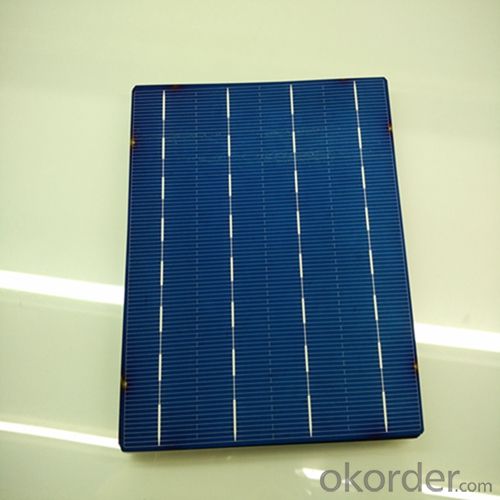
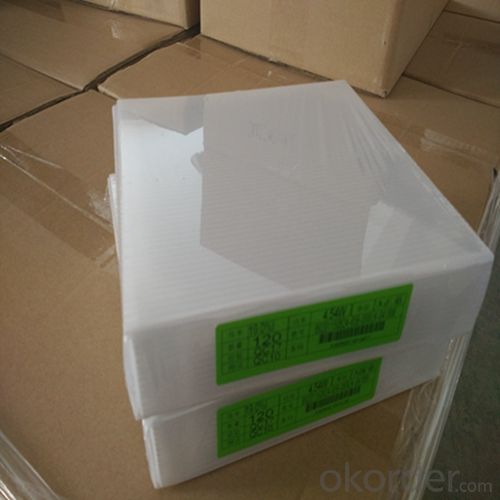
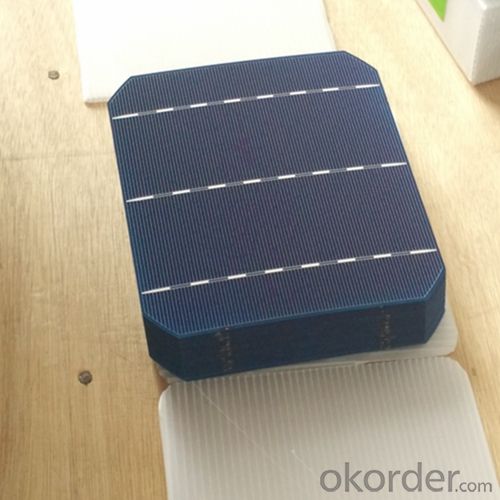
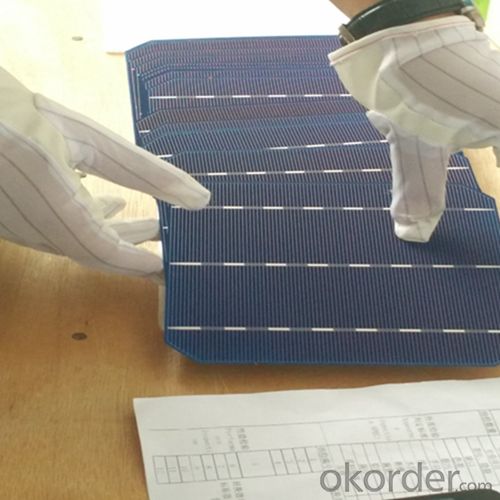
 FAQ
FAQ
Q: What price for each watt?
A: It depends on the quantity, delivery date and payment terms, generally Large Quantity and Low Price
Q: What is your size for each module? Can you tell me the Parameter of your module?
A: We have different series of panels in different output, both c-Si and a-Si. Please take the specification sheet for your reference.
Q: What is your size for each module? Can you tell me the Parameter of your module?
A: We have different series of panels in different output, both c-Si and a-Si. Please take the specification sheet for your reference.
- Q: How do solar cells compare to fossil fuel-based power generation?
- Solar cells are a more sustainable and environmentally friendly option compared to fossil fuel-based power generation. Solar cells harness energy from the sun, a renewable source, while fossil fuel-based power relies on finite resources like coal, oil, and natural gas. Solar cells produce clean energy with no greenhouse gas emissions, helping to combat climate change, whereas fossil fuel-based power generation releases harmful pollutants and contributes to air and water pollution. Additionally, solar cells require less maintenance and have a longer lifespan than fossil fuel power plants, making them a more cost-effective and efficient choice in the long run.
- Q: How do solar cells impact energy security?
- Solar cells positively impact energy security by providing a reliable and sustainable source of electricity. As they generate power from sunlight, solar cells reduce dependence on fossil fuels, which are finite and contribute to environmental degradation. By diversifying the energy mix and promoting renewable energy adoption, solar cells enhance energy resilience and reduce vulnerability to price fluctuations and supply disruptions. Additionally, solar cells can be deployed in remote areas, increasing access to electricity and improving energy security for off-grid communities.
- Q: What is the impact of bird nesting on solar cell performance?
- Bird nesting can have a negative impact on solar cell performance as it can lead to shading of the panels, reducing their overall efficiency. Additionally, bird droppings can accumulate on the panels, obstructing sunlight and potentially causing damage to the cells over time. Regular maintenance and prevention measures are necessary to mitigate these effects and ensure optimal solar energy generation.
- Q: Is that true that the price of solar cells will be reduced in the coming year?
- It is very possibile that that solar cells' price will go down this year because there were many orders last year, either from European or China market. The solar cells are actually very sustainable. Once you buy it, you can use it for years. With the falling demand the price of course will go down.
- Q: How do solar cells impact the local economy?
- Solar cells have a positive impact on the local economy as they create jobs, stimulate investment, and reduce energy costs. The installation, maintenance, and manufacturing of solar cells require skilled labor, thus creating employment opportunities within the community. Additionally, the growth of the solar industry attracts investments in infrastructure and research, fostering economic development. Moreover, solar energy helps lower electricity bills for businesses and households, freeing up funds that can be spent on other local goods and services, thereby boosting economic activity.
- Q: How to get high voltage, high current output of solar cells
- A reasonable series of parallel can be, and increase the number of sub-batteries
- Q: What is the largest solar cell installation in the world?
- The largest solar cell installation in the world is the Tengger Desert Solar Park in China, with a capacity of 1.5 gigawatts.
- Q: What is the role of bypass diodes in solar cell systems?
- The role of bypass diodes in solar cell systems is to minimize the impact of shading or partial module failure. They allow current to bypass the shaded or malfunctioning cells, preventing them from reducing the overall performance of the system.
- Q: Can solar cells be used in water heating systems?
- Yes, solar cells can be used in water heating systems. Solar thermal collectors, which use solar cells, can capture sunlight and convert it into heat energy to warm water. This technology is commonly used in solar water heating systems, where the heat generated by solar cells is transferred to water in order to provide hot water for various purposes.
- Q: I bought a new poly solar cells, and the test result of the conversion efficiency is 16.8%, is it lower than usual?
- The PV solar cells should be around 18%, any solar cells under that rate is not very efficient.
Send your message to us
Poly 156x156mm2 Solar Cells on Roof - Class A4 Made
- Loading Port:
- Shanghai
- Payment Terms:
- TT OR LC
- Min Order Qty:
- 6000 watt
- Supply Capability:
- 6000000 watt/month
OKorder Service Pledge
OKorder Financial Service
Similar products
Hot products
Hot Searches
Related keywords
